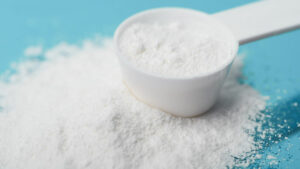Protein requirements can vary depending on the intensity, physicality, duration, and recovery time between athletic events and practice sessions.
Team sports – like football, soccer, basketball, and hockey, to name a few – represent variable-intensity, intermittent exercise, which combine both aerobic and anaerobic metabolisms – along with specific physiologic rules unique to each sport.
It’s the “stop-and-go” nature of these events that accounts for the wear and tear on the human body, which requires enhanced protein intake to repair and replace damaged muscle tissue.
The American College of Sports Medicine recommends a range of protein intake – 1.2 to 2.0 grams of protein per kilogram (2.2 pounds) of body weight per day – depending on the characteristics and demands on the athlete – like body building versus a marathon.
According to research – “Increased Protein Requirements in Female Athletes After Variable-Intensity Exercise” – appearing in the November 2018 issue of Medicine & Science in Sports & Exercise – “females are unfortunately underrepresented in sports science research, which is especially true of protein requirement studies that, to date, have been confined to males only. Consequently, there is a need to define protein requirements in female athletes participating in team sports.”
Canadian researchers sought to determine, “a dietary protein requirement in active females performing variable-intensity intermittent exercise, using the indicator amino acid oxidation (IAAO) method.,” and compare to non-active estimates of adult males.
According to the Journal of Nutrition, the IAAO method is based on the concept that when one indispensable amino acid (IDAA) is deficient for protein synthesis, then all other IDAA, including the indicator amino acid, will be oxidized.”
Six, twenty-one year old females, who completed five to seven metabolic trials during the luteal phase of their menstrual cycle, performed a modified Loughborough Intermittent Shuttle Test, before consuming eight hourly mixed meals – providing a test protein intake of 0.2–2.66 grams per kilogram of body weight per day (g.kg/day), 6 g.kg/day of carbohydrate, and sufficient energy for resting and exercise-induced energy expenditure.
The protein source was, “a crystalline amino acid modeling egg protein,” with the amino acid phenylalanine used, as the indicator amino acid for the IAAO testing.
Pre-test evaluations included: height, body mass, fat-free mass, percent body fat, estimation of maximum endurance capacity (VO2 Max), resting metabolic rate, and habitual energy expenditure.
It was determined that the protein estimates of 1.4 and 1.71 g.kg/day for females, who participated in variable-intensity, intermittent exercise, exceeds the test estimates of the non-active, adult males – 0.93 and 1.2 g.kg/day.
The researchers concluded that, “our data highlight the need to further develop and refine population-specific protein requirements to ensure that both male and female athletes engaged in all exercise modalities meet the metabolic demand for this important macronutrient.”
Based on forty years in pro sports, I’ve seen firsthand that the female athlete, for the most part, is exposed to exercise equipment, nutrition, and performance training protocols that are male oriented. The idea that one size or design fits all – males and females – does an injustice to female athletic competitors.
It’s time that the sports community came of age. Remember, you should always consult your physician before beginning any exercise, diet, or nutritional supplementation program.











